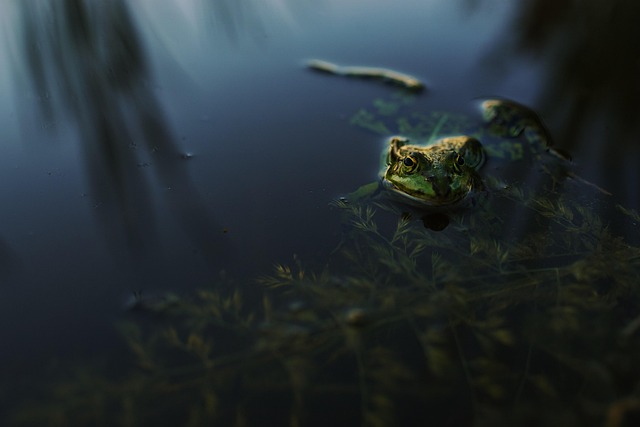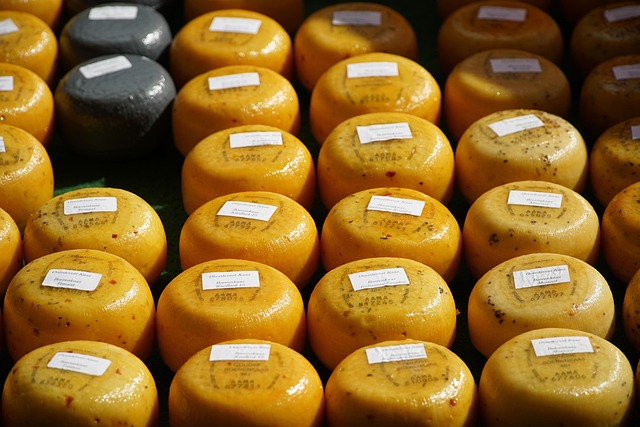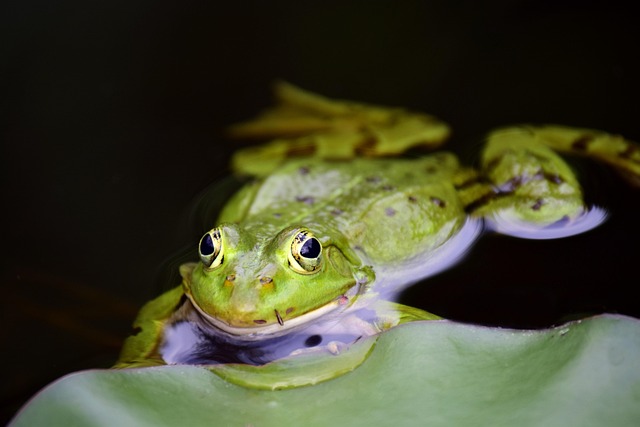
Gleaming Beauty: The Fascinating Gold Frog of the Animal Kingdom
In the lush rainforests of Central and South America lies one of nature’s most captivating creatures—the gold frog. Known scientifically as Phyllobates terribilis, this amphibian dazzles with its vibrant golden hue, a color that not only catches the eye but also signifies its unique position in the animal kingdom. The gold frog is a symbol of the intricate beauty found in the wild, resonating deeply with anyone who appreciates the wonders of nature.
These remarkable frogs inhabit the dense foliage of tropical rainforests, where humidity reigns and the air is rich with the sounds of exotic wildlife. The gold frog’s brilliant color serves as an example of nature’s artistry, shining brightly against the dark greens and browns of its environment. Yet, this luminescence is more than just a visual delight; it plays a crucial role in the frog’s survival. In nature, bright colors can signify danger, and the gold frog’s striking appearance warns potential predators of its toxicity. This fascinating adaptation underlines a vital truth of the animal kingdom: beauty often comes with a price.
Gold frogs are part of a broader family known for their toxic secretions. These amphibians produce batrachotoxin, one of the most potent poisons in the world. Indigenous people once utilized this toxin on their blowgun darts for hunting, showcasing the dual nature of beauty and danger that is prevalent in the animal kingdom. Such interactions highlight the complex web of life within ecosystems, reminding us that every creature, no matter how enchanting, plays an essential role in its habitat.
As ecological warriors, gold frogs indicate the health of their environment. Their sensitivity to pollution and climate change makes them excellent bioindicators, alerting scientists and conservationists to shifts in the ecosystem. The plight of the gold frog poignantly mirrors the ongoing environmental crises—deforestation, climate change, and the encroachment of urban development threaten their existence. In this way, their golden hue serves as a warning sign, prompting us to act before vibrant species like the gold frog fade away.
Beyond their ecological significance, gold frogs inspire awe and foster a profound appreciation for the earth’s biological diversity. Observing them in their natural habitat can evoke feelings of wonder and serenity, connecting us to the essence of nature itself. Their beauty reminds us of the marvels that the animal kingdom has to offer and instills a sense of responsibility towards preservation. In a world that often feels disconnected from nature, encounters with such incredible creatures rejuvenate our spirits and reaffirm our connection to the planet.
In exploring the lives of gold frogs, we come closer to understanding the delicate balance of ecosystems and the intricate relationships between species. Each gold frog thrives in its miniature universe, navigating the challenges of survival with grace. By learning about these enchanting creatures, we gain insight into their world and recognize the importance of fostering a harmonious relationship with nature to ensure the survival of not just the gold frog, but countless other species.



